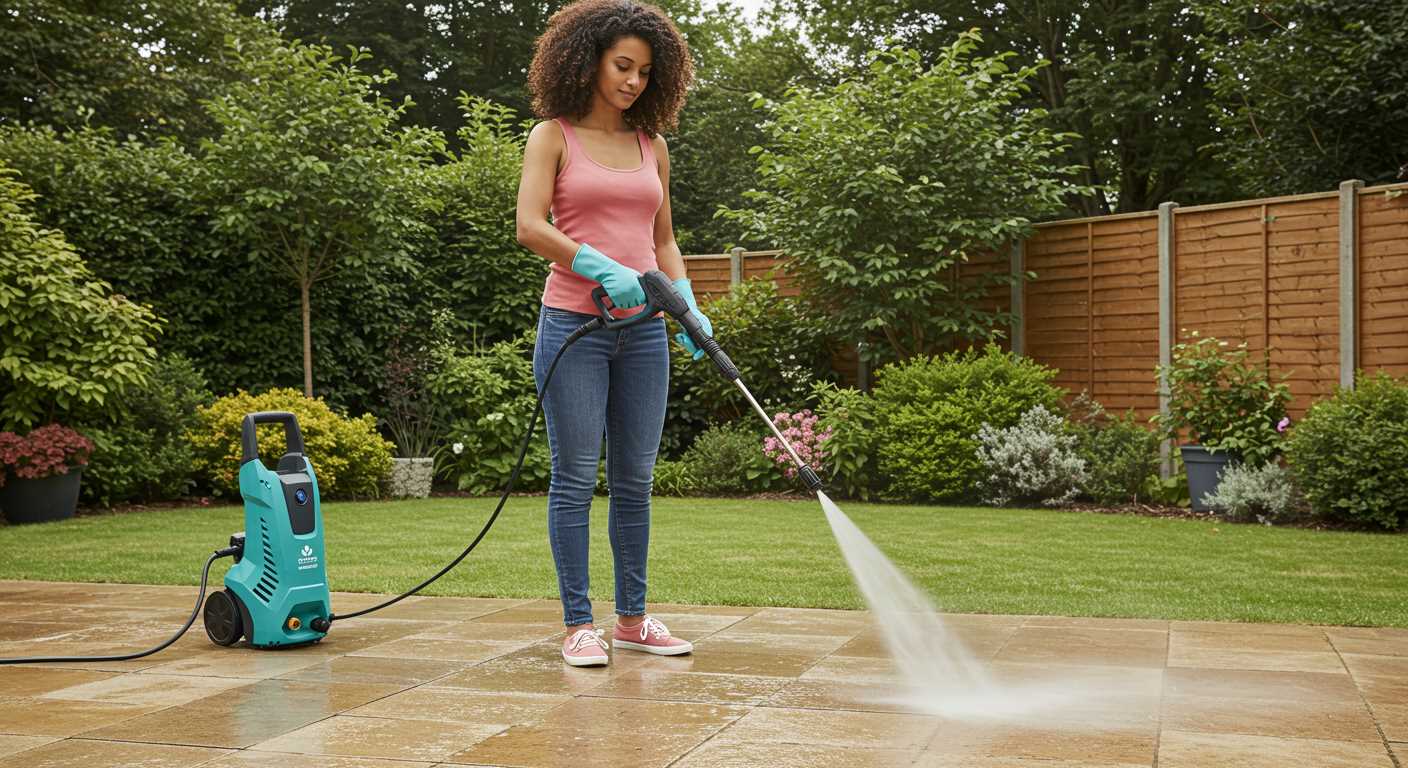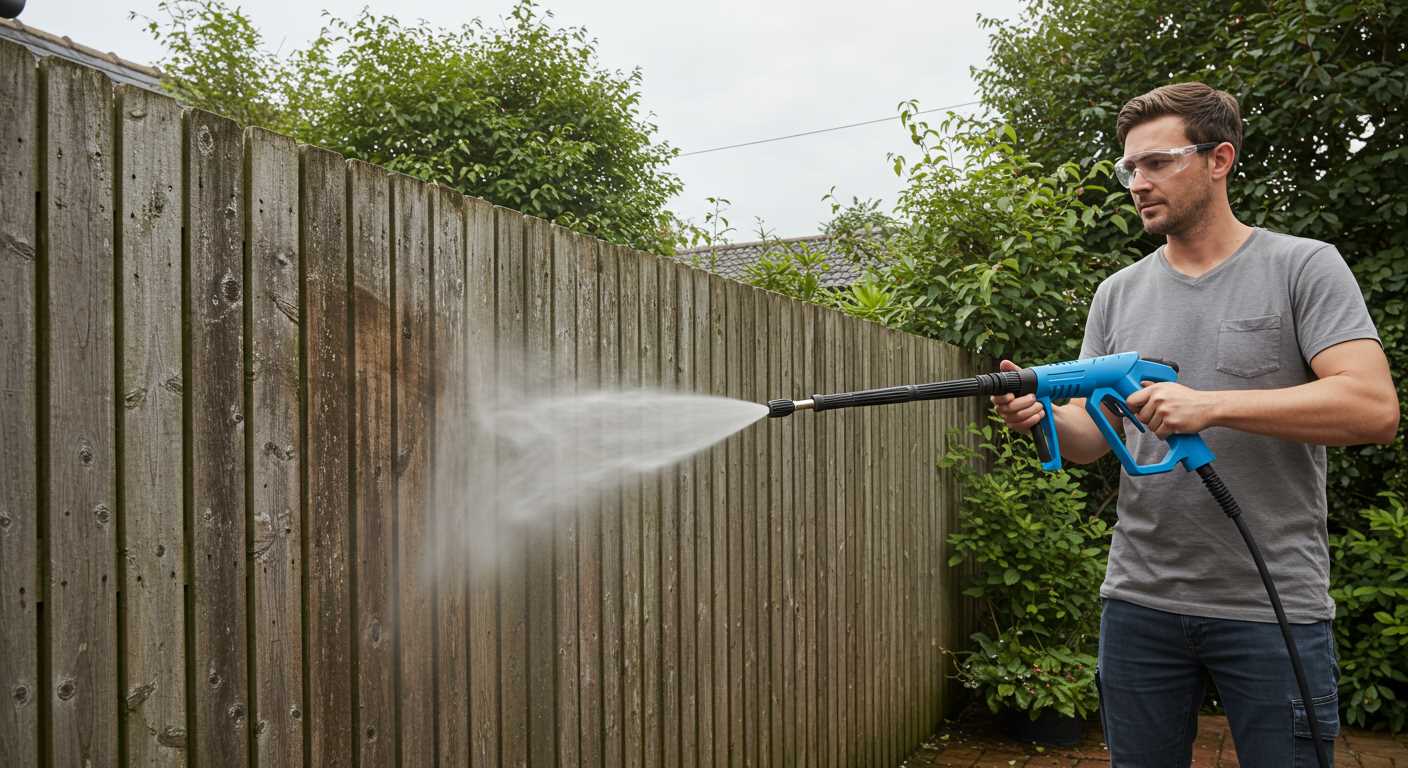



When selecting a cleaning device, aim for a water output of at least 8 to 10 litres per minute. This amount provides adequate pressure for most domestic tasks, such as cleaning driveways, patios, and vehicles. Ensuring your model delivers this level will significantly enhance your cleaning efficiency and save you time.
For larger jobs or commercial use, consider units that exceed 10 litres per minute. Models offering up to 15 litres per minute cater to more demanding tasks and can handle tougher grime and larger areas with ease. It’s essential to align the water output with the intended applications to achieve the best results.
While higher outputs can be beneficial, also assess the compatibility with your water source. Ensure your plumbing can support the selected unit’s requirements to prevent any performance issues. By focusing on these key specifications, you’ll make an informed choice and enjoy powerful cleaning capability in every use.
Understanding Flow Rate Measurements in Pressure Washers
.jpg)
Optimal measurements typically hover between 1.5 to 2.5 gallons per minute (GPM). This range provides a balance between water usage and cleaning efficiency, ensuring that dirt and grime are effectively removed without wasting resources.
Units are usually expressed in GPM, which indicates how much water is dispatched from the nozzle in a minute. It’s crucial to note that a higher numeric value does not always equate to better cleaning. Instead, the type of task and surface material dictate the appropriate volume. For instance, light tasks, such as washing cars or patio furniture, may only require around 1.5 GPM, while more demanding jobs, like cleaning driveways or decks, could benefit from a higher output.
In practice, you can gauge performance by the combination of water discharge and PSI (pounds per square inch). This relationship plays a significant role in the overall cleaning capability. A model that delivers 2.0 GPM at 1500 PSI will typically perform differently compared to one that offers the same GPM at 3000 PSI.
Pressure machines rated with lower volume characteristics yet higher pressure might still accomplish heavy-duty tasks adequately–particularly for stubborn stains where force is essential. Additionally, hose length and nozzle types can influence effectiveness and efficiency, so always consider these elements in conjunction with discharge values.
Lastly, the source of water can also impact measurements. Standard residential faucets usually suffice; however, certain situations may warrant adjustments, especially if water flow is restricted. Always ensure a robust water supply to maximise performance and prevent overheating of the system.
Choosing the Right Flow Rate for Different Cleaning Tasks
For heavy-duty outdoor tasks like cleaning driveways or patios, a minimum output of around 10 litres per minute is advisable. This volume effectively removes stubborn dirt and grime without requiring excessive effort.
When tackling vehicles or delicate surfaces, opting for a lower capacity of about 6 to 8 litres per minute may suffice. This prevents potential damage while still delivering satisfactory results.
In commercial settings, such as in fleet maintenance or industrial cleaning, models with outputs of 15 litres per minute or more are recommended. High-volume machines speed up job completion and enhance productivity.
For occasional light cleaning tasks like rinsing off garden furniture, a device with around 5 litres per minute works well. It’s ideal for quick jobs without the need for extensive setups.
Understanding the specific requirements of each task allows me to select the most suitable equipment, ensuring optimal performance while preserving the integrity of the surfaces being cleaned.
Comparing Flow Rates: Low vs High Pressure Washers
.jpg)
Specific tasks benefit from either lower or higher water output. For light cleaning jobs like washing cars or patio furniture, units producing around 6 to 8 litres per minute can suffice. These machines generally use less energy and are more economical, perfect for residential use and maintaining delicate surfaces.
However, for heavy-duty tasks such as cleaning driveways, industrial machinery, or removing tough stains, equipment with a output of 11 to 15 litres per minute is optimal. These models utilise increased water flow to enhance efficiency and significantly reduce cleaning time. They are designed to tackle more robust cleaning challenges effectively.
It is important to consider not just the volume but also the cleaning power, which is a product of the output and pressure. Lower output might require extended cleaning time at high pressure, potentially damaging some surfaces. In contrast, high-output machines at a reasonable pressure can accomplish tough jobs quickly without risk of harm.
Choosing between these options comes down to the specific demands of the work at hand. Those with lighter tasks should opt for lower-output washers, while professionals dealing with commercial jobs or extensive home renovations would benefit more from higher-output alternatives. Every situation calls for careful assessment of needs.
Impact of Flow Rate on Cleaning Time and Results

Increasing the volume of water delivered per minute significantly reduces the time required to achieve clean surfaces. A higher output translates to faster rinsing and enhanced removal of dirt and grime. For example, units that dispense around 10 litres per minute can tackle light cleaning tasks swiftly, while those exceeding 15 litres per minute excel at heavy-duty jobs.
In practical terms, I found that utilising a model with greater water delivery capabilities allows for fewer passovers, saving valuable time. Surfaces, particularly porous materials like concrete, benefit from the increased saturation, ensuring contaminants are dislodged more effectively.
The relationship between water output and cleaning efficiency is evident in stubborn stains. Persistent marks often require more than just pressure; they need consistent wetting to break down the debris. High-output machines help maintain that necessary contact time, improving overall effectiveness.
Pipeline maintenance is another field where generous water delivery shines. Flushing out residues and residues blocked in piping lines becomes surprisingly quick, making workflows smoother and reducing downtime.
Ultimately, though various tasks have specific demands, opting for a model with a robust output can transform the way one approaches cleaning. Whether it’s for home use or professional applications, understanding the balance between pressure and water delivery is key to achieving optimal results in minimal time.
Factors Influencing Optimal Selection
.jpg)
Several elements significantly impact the choice of an appropriate water output for cleaning equipment. These aspects include the type of surfaces being cleaned, the nature of the debris or contaminants, and the specific application requirements.
- Surface Type: Different materials require varying outputs. For instance, delicate surfaces like cars and wooden decks need lower outputs to prevent damage, while concrete or brick can handle higher volumes.
- Debris Characteristics: Stubborn stains or heavy grime necessitate increased water flow to enhance the removal process. Highly viscous substances or build-up may warrant a higher output to achieve effective results.
- Application Frequency: Regular maintenance tasks typically benefit from moderate outputs. Conversely, jobs requiring extensive cleaning may require more substantial water volumes to maximise efficiency.
- Attachment Variability: The choice of nozzles and attachments can alter the optimal selection. Specific nozzles can enhance the intensity and coverage, thus influencing the amount needed for effective cleaning.
- User Preference: Individual choice can also dictate the desired output. Some users may prefer a gentler approach for sensitive items, influencing their decision on appropriate settings.
Adjusting the output based on these factors can lead to better results and increased satisfaction with the cleaning outcome. Fine-tuning the level of water dispensed directly impacts efficiency and effectiveness during the cleaning process.
Practical Tips for Testing and Adjusting Your Pressure Washer’s Performance

Begin by checking your device’s manual for the manufacturer’s specifications. This document often provides recommended specifications and optimal settings for various cleaning tasks.
Next, gather the necessary tools: a flow meter, a stopwatch, and a measuring container, such as a bucket. To conduct a flow test, connect the washer to a water source and turn it on. Aim the nozzle into the bucket and set the timer for one minute. Measure the volume of water collected during that time. Divide the amount by sixty to obtain a per-minute measurement.
If adjustments are required, consider these strategies:
| Adjustment Method | Description |
|---|---|
| Check Nozzle | Using nozzles designed for different applications can impact performance. For heavy-duty tasks, select a larger orifice size for increased flow. |
| Inspect Hoses | Look for any kinks, blockages, or damage in hoses. Damaged hoses can significantly reduce output. |
| Adjust Pressure Settings | For models with adjustable pressure, reducing pressure can enhance water output, though it may reduce cleaning power. |
| Clean Filters | Clogged filters can restrict water flow. Ensure filters are clear of debris and regularly maintain them. |
Re-test after making adjustments to evaluate any changes in performance. If inconsistencies persist, consider professional maintenance to assess internal components.
Finally, document your results during testing. Creating a record of various settings and outcomes will help refine your approach and improve efficiency for future tasks.
FAQ:
What flow rate should I look for in a pressure washer for household cleaning?
A pressure washer with a flow rate between 6 to 8 litres per minute (L/min) is typically ideal for household cleaning tasks. This range provides enough water flow to remove dirt and grime effectively without overwhelming the system. This flow rate is suitable for tasks like cleaning patios, driveways, and garden furniture. Always check the pressure specifications along with the flow rate to ensure you have a well-balanced tool for your cleaning needs.
Is a higher flow rate always better for pressure washing?
Not necessarily. While a higher flow rate can help in moving more water and potentially achieving quicker results, it must be paired with appropriate pressure. An excessively high flow rate without the corresponding pressure can lead to ineffective cleaning, particularly on stubborn stains. It’s best to find a balance that suits the specific cleaning job to avoid damaging surfaces and wasting water.
What flow rate do I need for commercial pressure washing tasks?
For commercial pressure washing applications, a flow rate ranging from 10 to 12 L/min is often recommended. This higher flow rate helps accommodate larger areas and tougher cleaning tasks, such as cleaning vehicles, commercial buildings, or industrial equipment. The increased water output helps to speed up the cleaning process while ensuring that the job is done thoroughly.
Can I adjust the flow rate on my pressure washer?
Many pressure washers come with adjustable settings or interchangeable nozzles that can alter the flow rate. However, not all models allow for manual adjustment of the flow rate itself. Check your pressure washer’s user manual for information on whether it has such features. If it doesn’t, you may need to use different nozzles or attachments that can help control the water output for specific tasks.
How does flow rate affect the performance of a pressure washer?
The flow rate significantly impacts a pressure washer’s performance. A higher flow rate can result in quicker cleaning by allowing more water to wash away dirt and grime. However, if the pressure is too low for the flow rate, it may not clean as efficiently. Conversely, if the flow rate is too high without proper pressure, it might not effectively remove tough stains. The best approach is to consider both flow rate and pressure to achieve optimal cleaning results.








